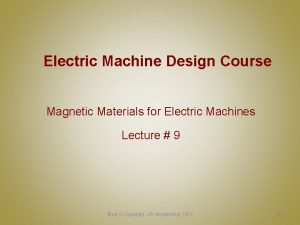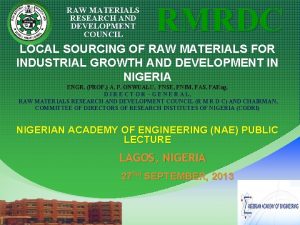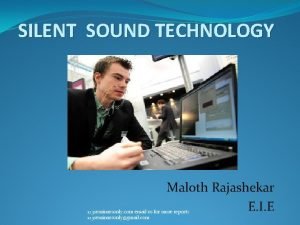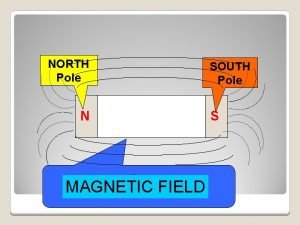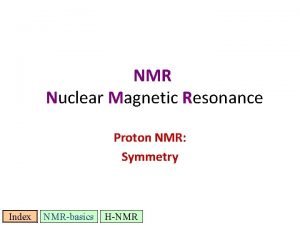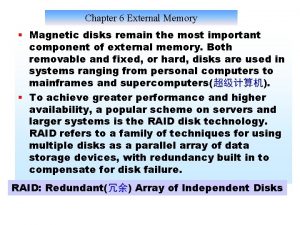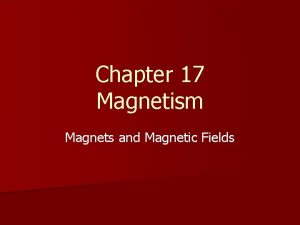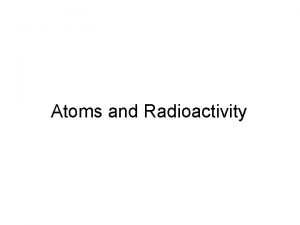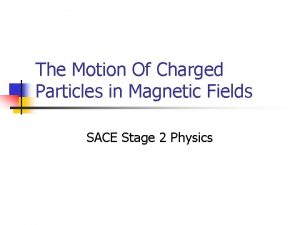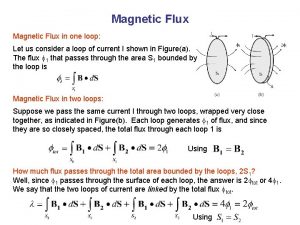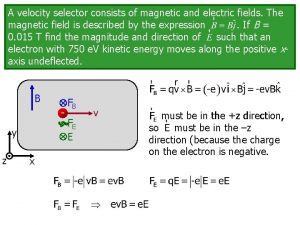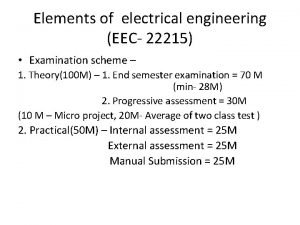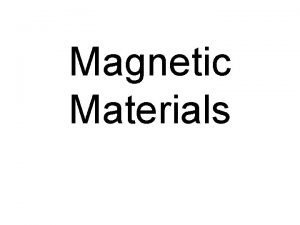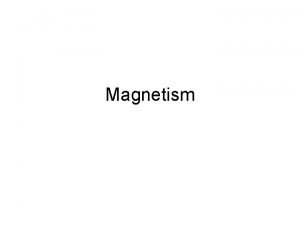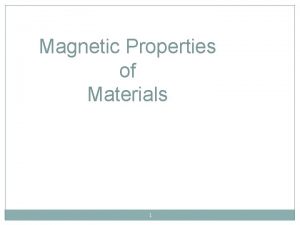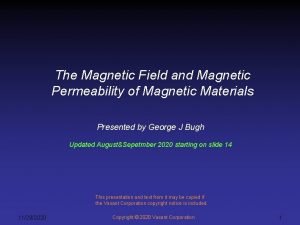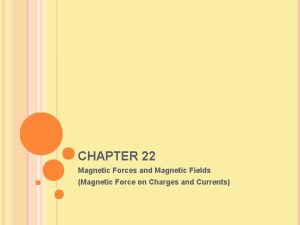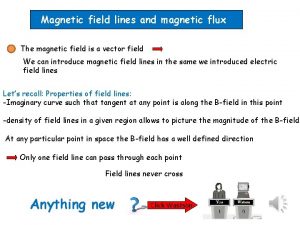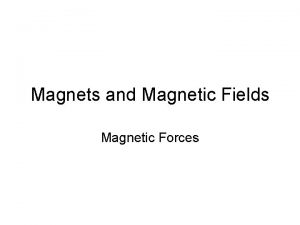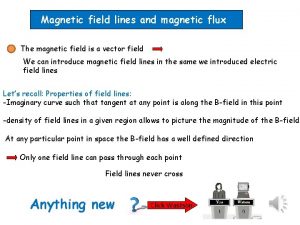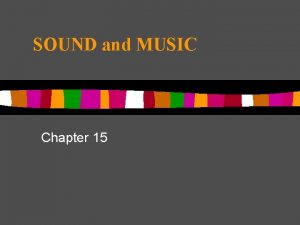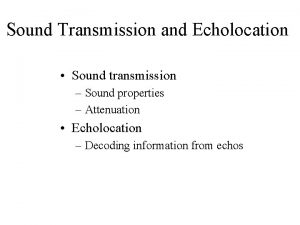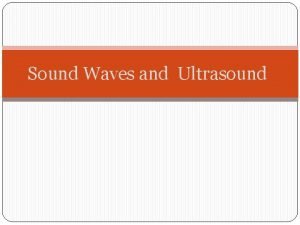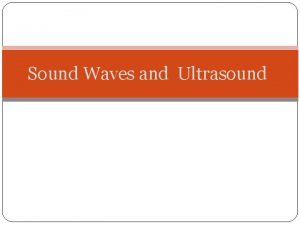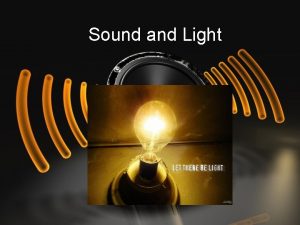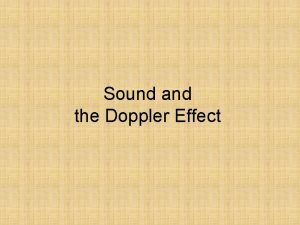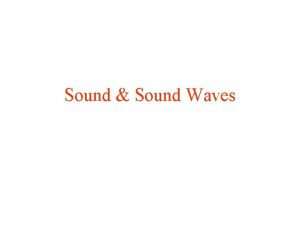Research on Agfa and ORWO magnetic sound materials

![Magnetic sound recording • Invented in 1898 • Used after 1940 [1] Magnetic sound Magnetic sound recording • Invented in 1898 • Used after 1940 [1] Magnetic sound](https://slidetodoc.com/presentation_image_h/d149aade84a0876be109c042019730a0/image-2.jpg)

![CELLULOSE-ACETATE (CA) • Used as a base until 1970 s [1, 2] • Suffers CELLULOSE-ACETATE (CA) • Used as a base until 1970 s [1, 2] • Suffers](https://slidetodoc.com/presentation_image_h/d149aade84a0876be109c042019730a0/image-4.jpg)
![POLYESTER • Polyethylene-terephthalate (PET) used since 1950 s [1, 2] • Very strong, inert POLYESTER • Polyethylene-terephthalate (PET) used since 1950 s [1, 2] • Very strong, inert](https://slidetodoc.com/presentation_image_h/d149aade84a0876be109c042019730a0/image-5.jpg)
![POLYESTER-URETHANE (PU) • Used as a binder on PET since 70 s [3] • POLYESTER-URETHANE (PU) • Used as a binder on PET since 70 s [3] •](https://slidetodoc.com/presentation_image_h/d149aade84a0876be109c042019730a0/image-6.jpg)


![It produces: • Change in tape’s mechanical and physical properties [4] • Decrease in It produces: • Change in tape’s mechanical and physical properties [4] • Decrease in](https://slidetodoc.com/presentation_image_h/d149aade84a0876be109c042019730a0/image-9.jpg)
![STICKY SHED SYNDROME (SSS) • Causes stickiness, magnetic layer shedding [2], squealing sound and STICKY SHED SYNDROME (SSS) • Causes stickiness, magnetic layer shedding [2], squealing sound and](https://slidetodoc.com/presentation_image_h/d149aade84a0876be109c042019730a0/image-10.jpg)



![[1] “ARSC Guide to Audio Preservation”, 2015 [2] “Study of Source Material and Consideration [1] “ARSC Guide to Audio Preservation”, 2015 [2] “Study of Source Material and Consideration](https://slidetodoc.com/presentation_image_h/d149aade84a0876be109c042019730a0/image-14.jpg)


























![[1] “Magnetic Tape from the Early Days to the Present” by FRIEDRICH KARL ENGEL, [1] “Magnetic Tape from the Early Days to the Present” by FRIEDRICH KARL ENGEL,](https://slidetodoc.com/presentation_image_h/d149aade84a0876be109c042019730a0/image-41.jpg)

- Slides: 42

Research on Agfa and ORWO magnetic sound materials in the collection stock of Potsdam Film Museum Adele Bosi 1, 2, Caroline Figueroa 3, Siobhan Piekarek 2, Elisabeth von Galen 2, Ulrich Rüdel 3 1 “Sapienza” University of Rome, Piazzale Aldo Moro 5, 00185 Rome, Italy 2 Potsdam Filmmuseum Collection, Pappelallee 20, 14469 Potsdam, Germany 3 University of Applied Science, Wilhelminenhofstraße 75 A, 12459 Berlin, Germany
![Magnetic sound recording Invented in 1898 Used after 1940 1 Magnetic sound Magnetic sound recording • Invented in 1898 • Used after 1940 [1] Magnetic sound](https://slidetodoc.com/presentation_image_h/d149aade84a0876be109c042019730a0/image-2.jpg)
Magnetic sound recording • Invented in 1898 • Used after 1940 [1] Magnetic sound material can be • COMMAG • SEPMAG [2]

They are composed by: • BASE (cellulose-acetate, polyvinyl chloride, polyester) • MAGNETIC LAYER (pigment, binder and additives) • BACK-COATING (pigment and binder)
![CELLULOSEACETATE CA Used as a base until 1970 s 1 2 Suffers CELLULOSE-ACETATE (CA) • Used as a base until 1970 s [1, 2] • Suffers](https://slidetodoc.com/presentation_image_h/d149aade84a0876be109c042019730a0/image-4.jpg)
CELLULOSE-ACETATE (CA) • Used as a base until 1970 s [1, 2] • Suffers from well known “Vinegar Syndrome”, which produces ACETIC ACID
![POLYESTER Polyethyleneterephthalate PET used since 1950 s 1 2 Very strong inert POLYESTER • Polyethylene-terephthalate (PET) used since 1950 s [1, 2] • Very strong, inert](https://slidetodoc.com/presentation_image_h/d149aade84a0876be109c042019730a0/image-5.jpg)
POLYESTER • Polyethylene-terephthalate (PET) used since 1950 s [1, 2] • Very strong, inert and durable • No degradation processes observed, but…
![POLYESTERURETHANE PU Used as a binder on PET since 70 s 3 POLYESTER-URETHANE (PU) • Used as a binder on PET since 70 s [3] •](https://slidetodoc.com/presentation_image_h/d149aade84a0876be109c042019730a0/image-6.jpg)
POLYESTER-URETHANE (PU) • Used as a binder on PET since 70 s [3] • Separated into “HARD SEGMENTS”, and “SOFT SEGMENTS” [4]

It undergoes degradation through • HYDROLYSIS • STICKY SHED SYNDROME • UNIDENTIFIED PROBLEMS

HYDROLYSIS • Produces alcohol and carboxylic acid • The produced ACID further catalyses the reaction [5]
![It produces Change in tapes mechanical and physical properties 4 Decrease in It produces: • Change in tape’s mechanical and physical properties [4] • Decrease in](https://slidetodoc.com/presentation_image_h/d149aade84a0876be109c042019730a0/image-9.jpg)
It produces: • Change in tape’s mechanical and physical properties [4] • Decrease in glass transition temperature [5]
![STICKY SHED SYNDROME SSS Causes stickiness magnetic layer shedding 2 squealing sound and STICKY SHED SYNDROME (SSS) • Causes stickiness, magnetic layer shedding [2], squealing sound and](https://slidetodoc.com/presentation_image_h/d149aade84a0876be109c042019730a0/image-10.jpg)
STICKY SHED SYNDROME (SSS) • Causes stickiness, magnetic layer shedding [2], squealing sound and loss of high frequencies [4] • Mechanism involved is not so clear yet

• Involves soft PU segments, decrease of H-bonded carbonyl groups • It seems to involve BACK-COATED tapes • Archivists and restorers BAKE SSS magnetic tapes for 5 -8 h at 54 C° [4]

Other UNIDENTIFIED PROBLEMS don’t respond to baking • Mechanism involved is not so clear yet • They cause stickiness and squealing also in non back-coated tapes, but they don’t cause shedding [3]

…a little bit of general DISAGREEMENT about PU decay processes classification and mechanisms. Further STUDIES would be needed.
![1 ARSC Guide to Audio Preservation 2015 2 Study of Source Material and Consideration [1] “ARSC Guide to Audio Preservation”, 2015 [2] “Study of Source Material and Consideration](https://slidetodoc.com/presentation_image_h/d149aade84a0876be109c042019730a0/image-14.jpg)
[1] “ARSC Guide to Audio Preservation”, 2015 [2] “Study of Source Material and Consideration on the Preservation of SEPMAG Tapes”, Katrin Abromeit, 2011 [3] “FACET Format Characteristics and Preservation Problems” Version 1. 0, Mike Casey, 2007 [4] “Analysis of Audio Magnetic Tapes with Sticky Shed Syndrome by ATR-FTIR”, Hobaica, 2012 [5] “EFFECT OF HYDROLYSIS ON MOLAR MASS AND THERMAL PROPERTIES OF POLY(ESTER-URETHANES)” by A. Pegoretti, A. Penati and J. Kolarfk, 1994

• 90% of Potsdam Film Museum collection is Agfa and ORWO material • ROOM 13 and ROOM 08 store magnetic sound materials. These rooms have been noticed to occur strange odor.

History of Agfa and ORWO magnetic sound materials started during 1930 s: • 1930 s Aktiengesellschaft für Anilinfabrikation (Agfa) became interested in using BASF Magnetophon C • 1943 Agfa Wolfen Magnetband Typ C in CA first started to be produced [2] while BASF started selling PVC Magnetophon L (=Luvitherm) [1]

• 1946 Agfa Film Factory in Wolfen was incorporated in Soviet Enterprises “Photoplenka” [3] • 1950 s Agfa Wolfen started experiments for production of PET tapes[4]. A lot of material experiments started because of lack of equipment due to the separation of Germany [2]

• 1964 the Film Factory sold its trademark rights to the sister company Agfa Gevaert and changed its name in ORWO (=Original Wolfen) [5] • 1968 the first PET tapes PS 25 U 6 and PS 18 U 6, were first sold [4] • 1974 ORWO stopped production of CA tapes [4] • 1994 magnetic tapes production in Wolfen stopped [2]

In Potsdam Film Museum Collection one every ten sound material boxes has been opened and checked.

18 different types: ROOM 13 (Amateur tapes) ROOM 08 (Professional tapes) TYP NR Typ C 13 CPS 35 U 6 1 Typ CR 4 Typ CR 1 CPR 1 CR 35 U 6 1 Typ CH 3 CPR 50 U 6 7 CPR 50 U 6 3 Typ 103 2 Typ 103 5 Typ 104 25 Typ 106 17 Typ 115 30 Typ 115 6 Typ 121 2 Typ 100 2 PS 18 U 6 4 Typ 114 1 Typ 207 LN 1 Typ 116 1 Typ 205 LN 1

To a visual inspection, a lot of tapes seem to be in good condition. Nevertheless, the older ones are usually very brittle and curl, sometimes broken.

Some of them, especially CPR 50 U 6, have popped strands and windowing.

Some tapes have fungus, and some other ones have different spots which look like they are inside the material.

• PU problems are difficult to recognize without playing the tape • Knowledge about composition is needed.

If neglected, PU problems will worsen and become visible, and lead to a loss of tapes information. The PET/PU SEPMAG of «Christoph und Dorina» film, is completely sticky and unplayable.

Research in INDUSTRIE UND FILMMUSEM WOLFEN archive • In CHEMIEPARK, in Bitterfeld. Wolfen industrial area • Agfa and ORWO Filmfabrik, where key developments in film materials and processes were brought

• Agfa and ORWO sound materials brochures • Historical information • Nomenclature method • Recipes • Letters • Production plans • Material experiments plans • Confidential documents

Nomenclature • CPS 50 U 6 (before 1969) • Typ 100 (after 1969)

Archive documents + Nomenclature system knowledge + FTIR-ATR analysis: information about tape types present in Film Museum stock






FTIR Spectrometer PU 9800 Philips, Diamant ATR Scan number: 32, Resolution: 4 cm-1, Software: OMNIC ATR-FTIR spectum of Typ C, base layer (cellulose-acetate)

FTIR Spectrometer PU 9800 Philips, Diamant ATR Scan number: 32, Resolution: 4 cm-1, Software: OMNIC ATR-FTIR spectum of Typ 114, base layer (polyethylene-terephthalate )

FTIR Spectrometer Philips PU 9800, Diamant ATR Scan number: 32, Resolution: 4 cm-1, Software: OMNIC ATR-FTIR spectum of Typ 116, magnetic layer (polyurethane and polyvinylformal)

Some questions are however still open: • Are there in Potsdam Film Museum stock PU affected PET tapes? • What kind of PU problem does “Christoph und Dorina” have? • Is it possible to understand different PU decays mechanism by FTIR?

• • Which are causes? Which role does back-coating play? Is it possible to avoid? Should be CA and PET stored separately?

• Useful data acquired • PU problems mechanisms and causes need to be further understood to try to develop a suitable conservation strategy.
![1 Magnetic Tape from the Early Days to the Present by FRIEDRICH KARL ENGEL [1] “Magnetic Tape from the Early Days to the Present” by FRIEDRICH KARL ENGEL,](https://slidetodoc.com/presentation_image_h/d149aade84a0876be109c042019730a0/image-41.jpg)
[1] “Magnetic Tape from the Early Days to the Present” by FRIEDRICH KARL ENGEL, 1988 [2] Documents in Wolfen Museum Archive, 572 [3] https: //www. chemiepark. de/en/der-chemiepark/historie/ [4] “Die Filmfabrik Wolfen Aus der Geschichte” Heft 6 [5] http: //www. orwonet. de

 Agfa dicom
Agfa dicom Agfa healthcare ag
Agfa healthcare ag Magnetic permeability of materials
Magnetic permeability of materials Magnetic field strength h
Magnetic field strength h Magnetic moment and magnetic field relation
Magnetic moment and magnetic field relation F=i(lxb)
F=i(lxb) Distinguish between magnetic and nonmagnetic materials
Distinguish between magnetic and nonmagnetic materials Distinguish between magnetic and nonmagnetic materials
Distinguish between magnetic and nonmagnetic materials Solid liquid gas
Solid liquid gas Magnetic materials used in electrical machines
Magnetic materials used in electrical machines What is magnet
What is magnet Go noodle cant stop the feeling
Go noodle cant stop the feeling What is the difference between useful and harmful materials
What is the difference between useful and harmful materials Man made materials
Man made materials Adopting materials
Adopting materials “a sound mind is in a sound body”
“a sound mind is in a sound body” Sound muffling material
Sound muffling material Direct materials budget with multiple materials
Direct materials budget with multiple materials Raw material research and development council salary scale
Raw material research and development council salary scale What is silent sound technology
What is silent sound technology Meaning and scope of research
Meaning and scope of research Contrast applied research and basic research
Contrast applied research and basic research Operational thought
Operational thought Example of applied research
Example of applied research Exploratory research and conclusive research
Exploratory research and conclusive research What is inquiry in practical research 2
What is inquiry in practical research 2 Identification of the problem in research
Identification of the problem in research 21lwuy8i6hw -site:youtube.com
21lwuy8i6hw -site:youtube.com Force and magnetic field formula
Force and magnetic field formula Aa'bb' pattern nmr
Aa'bb' pattern nmr Learning: module 26: magnetic forces and fields
Learning: module 26: magnetic forces and fields Scrap heap magnet circuit diagram
Scrap heap magnet circuit diagram A system has 12 magnetic tape drives and 3 processes
A system has 12 magnetic tape drives and 3 processes Magnetic disk read and write mechanism
Magnetic disk read and write mechanism Draw and label a picture of the earth's magnetic field
Draw and label a picture of the earth's magnetic field Defination of radioactivity
Defination of radioactivity Kinetic energy in magnetic field
Kinetic energy in magnetic field How to find magnetic flux
How to find magnetic flux A velocity selector consists of electric and magnetic
A velocity selector consists of electric and magnetic Leakage factor
Leakage factor Dot and cross in magnetic field
Dot and cross in magnetic field Electric currents and magnetic fields
Electric currents and magnetic fields Electric currents and magnetic fields
Electric currents and magnetic fields









